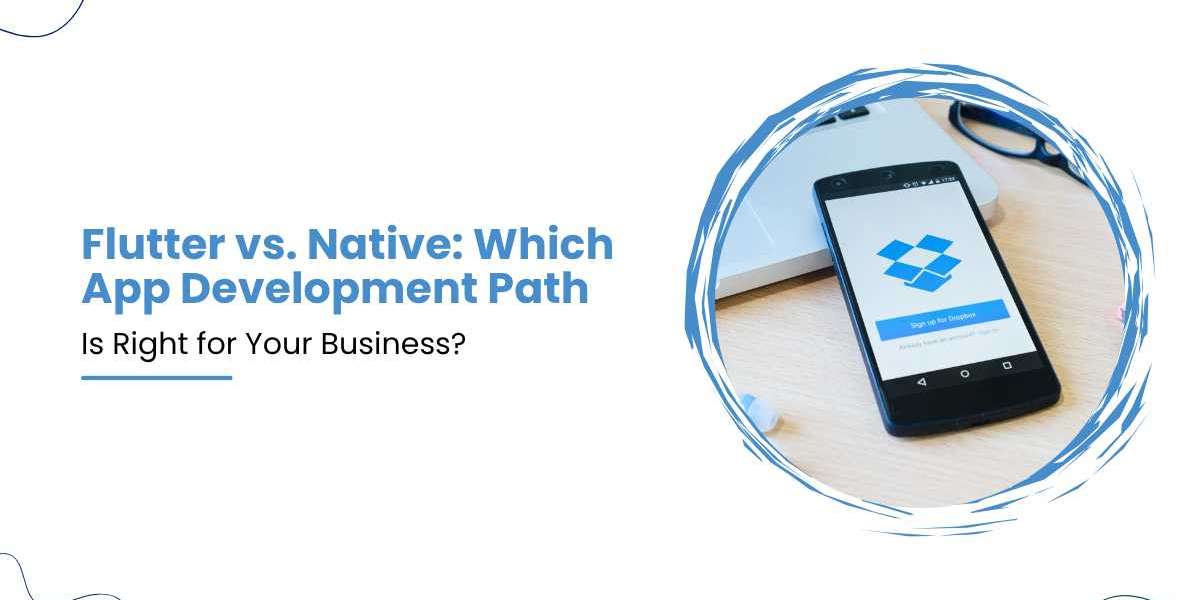In 2024, global spending on mobile app development exceeded $200 billion, with over 60 percent of businesses launching multi-platform apps. Yet, native iOS and Android apps accounted for 55 percent of total downloads. Meanwhile, a Flutter App Development Company can cut development time by 40–50 percent while delivering near-native performance. However, native development still leads in deep hardware integration and UI fidelity. This article offers a technical comparison between Flutter and native development to help your business choose the best path.
Development Speed and Cost
Shared Code vs. Two Separate Apps
Flutter uses Dart to build a single, unified codebase targeting both iOS and Android. That means every feature, fix, and update applies to both platforms simultaneously. In contrast, native development builds two entirely different codebases, one in Swift or Objective‑C for iOS and another in Java or Kotlin for Android doubling the workload and complexity.
Consider a medium-sized app. A Flutter App Development Company can deliver a Minimum Viable Product (MVP) in 12 weeks with a small team of three. Native development, however, requires separate work streams and often takes 20 weeks in total, across two teams. The result is nearly 40 percent faster delivery and approximately 33 percent lower cost with Flutter.
Performance and Responsiveness
Rendering Engine vs. Native UI Frameworks
Flutter compiles to native ARM machine code and uses the Skia graphics engine to render UI consistently across platforms. It achieves a stable 60 fps performance on modern devices. Meanwhile, native apps have direct access to UIKit and Jetpack Compose, which can deliver faster animations and smoother UI transitions sometimes reaching 120 fps on supported hardware.
App Size and Startup Time
Flutter includes the framework within each app, adding 4–6 MB even to simple apps. Native builds if optimized can be smaller and launch slightly faster, thanks to platform-optimized binaries and resources.
User Interface and Platform Adaptation
Widgets and Adaptive Design
Flutter provides both Material (Android) and Cupertino (iOS) widgets, presenting a consistent UI by default. Developers can apply conditional logic to fine-tune platform-specific behaviors.
Visual Fidelity in Native
Native development supports direct use of system-level design components. This enables immediate adoption of new visual features and design conventions, ensuring an always fresh appearance that matches the OS.
Device Capabilities and Plugins
Ecosystem vs. Platform APIs
Flutter offers an impressive plugin ecosystem covering camera, location, Bluetooth, and more. Many plugins have over a million downloads. A trusted Flutter App Development Company audits popular plugins to ensure they are maintained and secure.
However, when it comes to edge cases such as advanced background services, NFC payment processing, or real-time sensor data a native implementation often provides clearer and more efficient access through direct APIs.
Development Workflow and Testing
Hot Reload vs. Live Previews
Flutter's Hot Reload feature lets developers update code and see immediate results in running apps. Many developers say this feature alone speeds up iteration by five times compared to native development.
Testing Ecosystems
Flutter supports a layered test strategy: unit tests, widget tests, and integration tests. Native platforms provide XCTest for iOS and Espresso or UI Automator for Android alongside powerful profiling and debugging tools.
Both worlds support Continuous Integration and Delivery. Flutter developers use Fastlane or Codemagic.
Maintainability and Code Structure
Modularity and State Management
Flutter enforces a widget-based approach and supports modular architectures using Provider, Bloc, or Riverpod. Its code structure often results in cleaner separation between UI, logic, and data.
Null Safety and Compile-Time Checks
Dart, Swift, and Kotlin all support null safety at compile time. This empowers static analysis and reduces runtime crashes related to unexpected null values.
Talent Availability and Expertise
Developer Supply and Experience
Flutter has rapidly grown in popularity. However, seasoned Flutter engineers may still be fewer in number. Native developers bring deep platform expertise, familiarity with OS behaviors, and debugging Senta tools.
Team Knowledge
A reputable Flutter App Development Company demonstrates robust knowledge in architecture, modularization, testing, and CI/CD styling quality comparable to native experts, while maintaining cross-platform efficiency.
Maintenance, Updates, and Future-Proofing
OS Migration and Feature Sync
Flutter releases updates that need upgrading. Teams update engines carefully to avoid breaking changes. Native development stays aligned with immediate OS updates, ensuring access to new APIs and features from day one.
Ecosystem and Community Support
Flutter boasts a strong open-source ecosystem. However, native developers still get first access to new system tools, keeping apps at the forefront of platform enhancements.
Security and App Hardening
Obfuscation and Source Protection
Flutter apps use AOT compilation, which packages native machine code. Obfuscation further hides method names. Native apps use code stripping and symbol removal tools—such as bitcode for iOS and ProGuard/R8 for Android for similar protection.
Sensitive Code Access
Secure handling of credentials, biometric auth, or encryption requires careful implementation. Native development offers mature frameworks like Secure Enclave, whereas Flutter configs depend on plugins backed by native capabilities.
Real-World Example: E-Commerce App
Business Requirements
An e-commerce business required a multi-platform mobile app with AR product previews, advanced filters, animations, and secure checkout.
Flutter Implementation by Experts
A Flutter App Development Company built shared modules for user authentication, product listings, and payment processing. They used AR plugins and integrated platform channel code for camera adjustments. Hot Reload sped UI modularization significantly.
When Native Delivered Better
Developers noted occasional AR jitter and pixel lag on older devices. Porting critical AR components to native improved stability. A hybrid solution common UI in Flutter, AR in native modules offered optimal performance.
Make the Right Decision
Budget and Timeline Constraints
Flutter is a wise choice for businesses needing fast, cost-effective dual-platform results.
Performance and Hardware Needs
When apps rely heavily on hardware AR, real-time data, sensors native development shines with direct platform APIs.
Update and Maintenance Outlook
If you need rapid support for the latest OS features and consistent performance, native offers broader control. Flutter mitigates this with regular engine updates and plugin patches.
Talent and Ecosystem Strength
If your team already excels in native platforms, sticking with that path might avoid re-training. But if your goals include cross-platform reach with minimized resources, a Flutter App Development Company can add strategic value.
Best Practices for Flutter Projects
- Choose state management early (Bloc, Provider, Riverpod).
- Structure code into modules with clean separation.
- Use platform channels for hardware access segments.
- Apply modular widgets for reuse across screens.
- Set up automated CI/CD pipelines with tests.
- Keep plugins up to date and audited.
- Profile the app regularly for CPU and memory.
- Use code obfuscation and apply analytics and crash monitoring early.
Native-Led Projects Still Win When
- You target ultra-smooth 120 fps animations.
- You need tight control over background services or sensor APIs.
- You rely on bleeding-edge system UI innovations.
- You must match native platform updates immediately without lag.
Conclusion
The right choice between Flutter and native depends on your business needs, technical demands, and long-term vision. A Flutter App Development Company offers fast, cost-effective dual-platform app delivery, without compromising quality or performance. Native development remains preferable when deep hardware integration, extreme performance, or early adoption of new OS features matter most.
Assess your priorities carefully. Use Flutter for speed, reuse, and efficiency. Opt for native when precision, control, or the latest platform capabilities drive your success. Either path, when executed well, delivers value and chooses the one aligned with your strategy.












